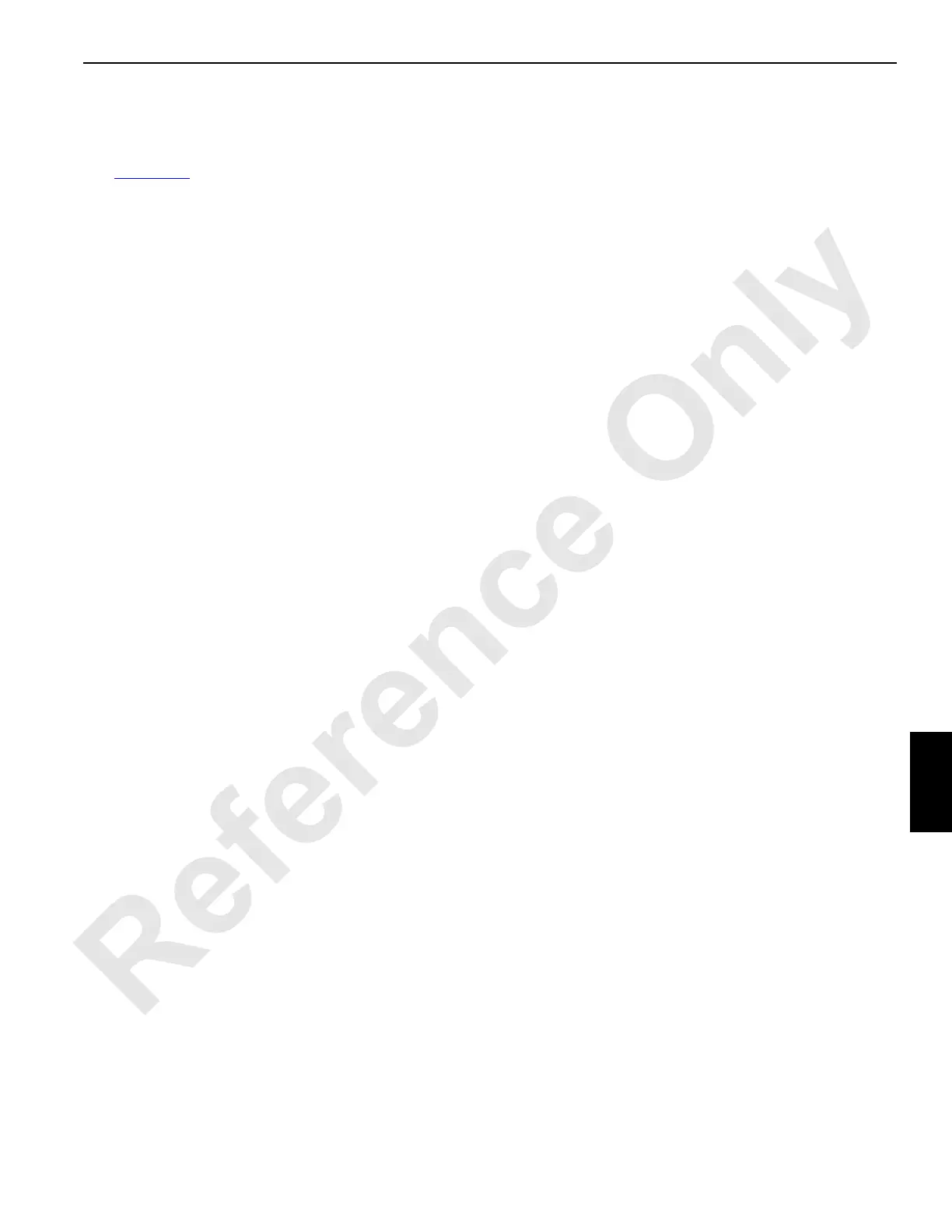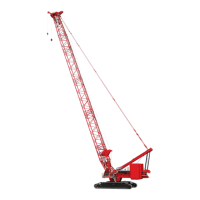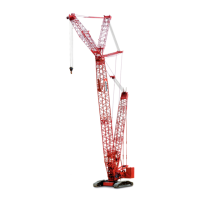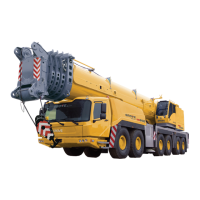Manitowoc Published 11-22-17, Control # 257-02 7-11
MLC300 SERVICE/MAINTENANCE MANUAL POWER TRAIN
REPLACING THE FUEL FILTER—MTU
Overview
See Figure 7-10 for the following procedure.
The fuel filter requires periodic maintenance.
• Filters left unchanged make more work for filters closer
to the engine, thus increasing the risk of unclean fuel
running in the engine.
• An improperly installed or damaged filter can allow dirty
fuel to be drawn into the engine.
Either condition can cause engine damage.
Inspecting the Fuel Filter
To maintain engine protection and to prolong filter service
life, check the fuel level in the filter daily while the engine is
running and observe the following:
• If the fuel level is at the top of the label, watch carefully
over the next few weeks for the fuel level to reach the
black bar above the label (10).
• If the fuel level has reached the change filter indicator on
the black bar above the label, the filter must be changed.
NOTE: If the fuel level is below the label and adding fuel to
the fuel tank raises the level in the filter to the black
bar, the filter may not need to be replaced. To verify
whether the filter needs to be replaced, loosen the
vent cap (2) and watch the level of fuel in the filter
while the engine runs. The filter does not need to
be replaced if the level in the filter decreases.
Replacing the Fuel Filter
1. Close the fuel inlet port (6) and fuel outlet port (7).
2. Loosen the vent cap (2).
3. Place a container below the drain valve (1) to capture
draining fuel in the following step.
4. Open the drain valve and drain the filter (4) until the fuel
level is just below the housing. Fuel is less likely to spill
when the cover (3) is removed if the fuel is just below the
housing (5).
The drained fuel can be set aside and reused to prime
the filter or can be disposed of.
NOTE: Dispose of used fuel in a way that follows all local,
state, and federal environmental regulations.
5. Using the collar wrench (8a), loosen and remove the
collar (9) from the cover.
a. Loosen the collar two half-twists with the collar
wrench (8b).
b. Twist the cover with both hands until the cover is
completely loose.
6. Remove the cover, peel the large O-ring off the body,
and set the cover aside.
7. Remove the filter (4) by pulling straight up. Hold the filter
over the housing to let excess fuel drip.
8. Remove the filter grommet from the tube.
9. Dispose of the old filter according to local environmental
regulations.
10. Remove the vent cap (2) and peel the small O-ring from
the vent cap. Wipe the vent cap with a clean towel.
11. If you have not already done so, peel the large O-ring off
the body.
12. Clean the cover by wiping the rim and outside with a
clean towel and install both new O-rings (provided with
the new filter).
13. Manually twist the vent cap (2) onto the top of the
cover (3).
14. Wipe the threads with a clean towel to remove any
debris and to ease installation of the collar (9).
15. Place the filter on the tube and press down to seat the
grommet firmly on the base of the tube.
16. Make sure the spring (11) is on the top inside of the
cover (3).
17. Place the cover (3) over the filter (4), and the collar (9)
over the cover.
18. Apply downward pressure to the cover (3) and tighten
the collar (9) with both hands. When the collar is tight
against the body, use the collar wrench to twist the collar
one notch to ensure proper tightness (8b).
NOTE: Tightening the collar past one notch could cause
improper filter function and structural damage.
19. Prime the unit by removing the vent cap (2) and filling
the clear cover (3) with clean diesel fuel or with the fuel
set aside in step 4. Place the vent cap on the cover and
tighten the cap by hand.
20. Open the fuel inlet port (6) and fuel outlet port (7) and
run the engine for a minute.
21. While the engine is running, open the vent cap (2).
Close the vent cap when the fuel level is below the
label (10).

